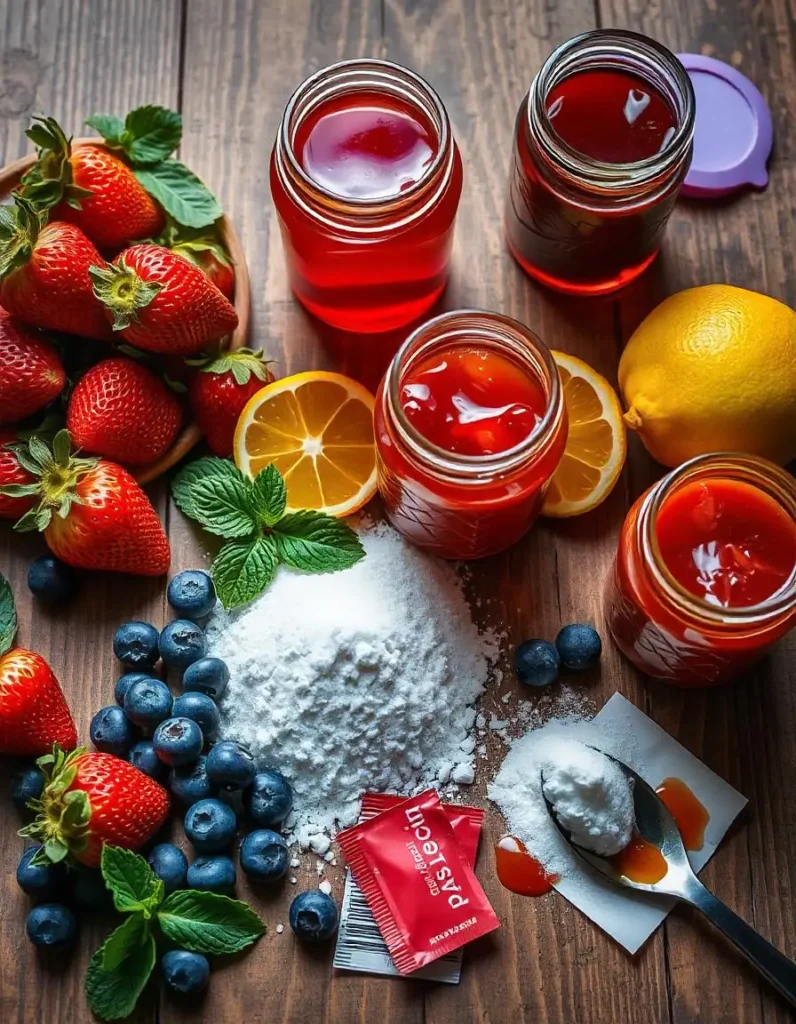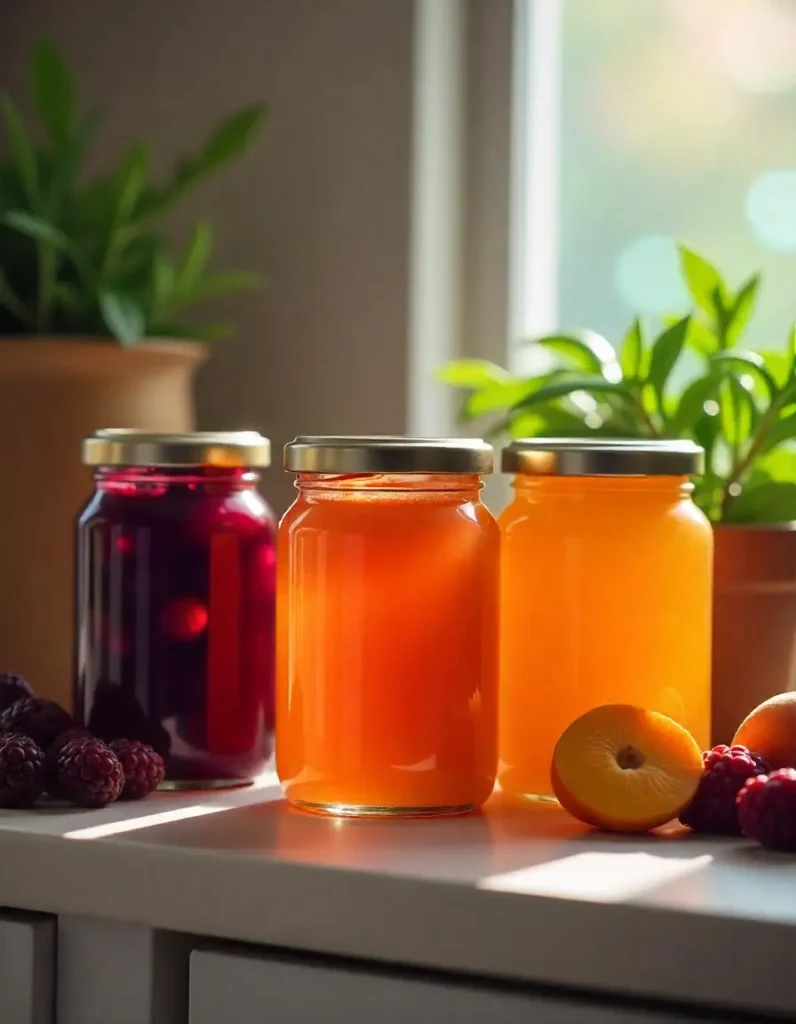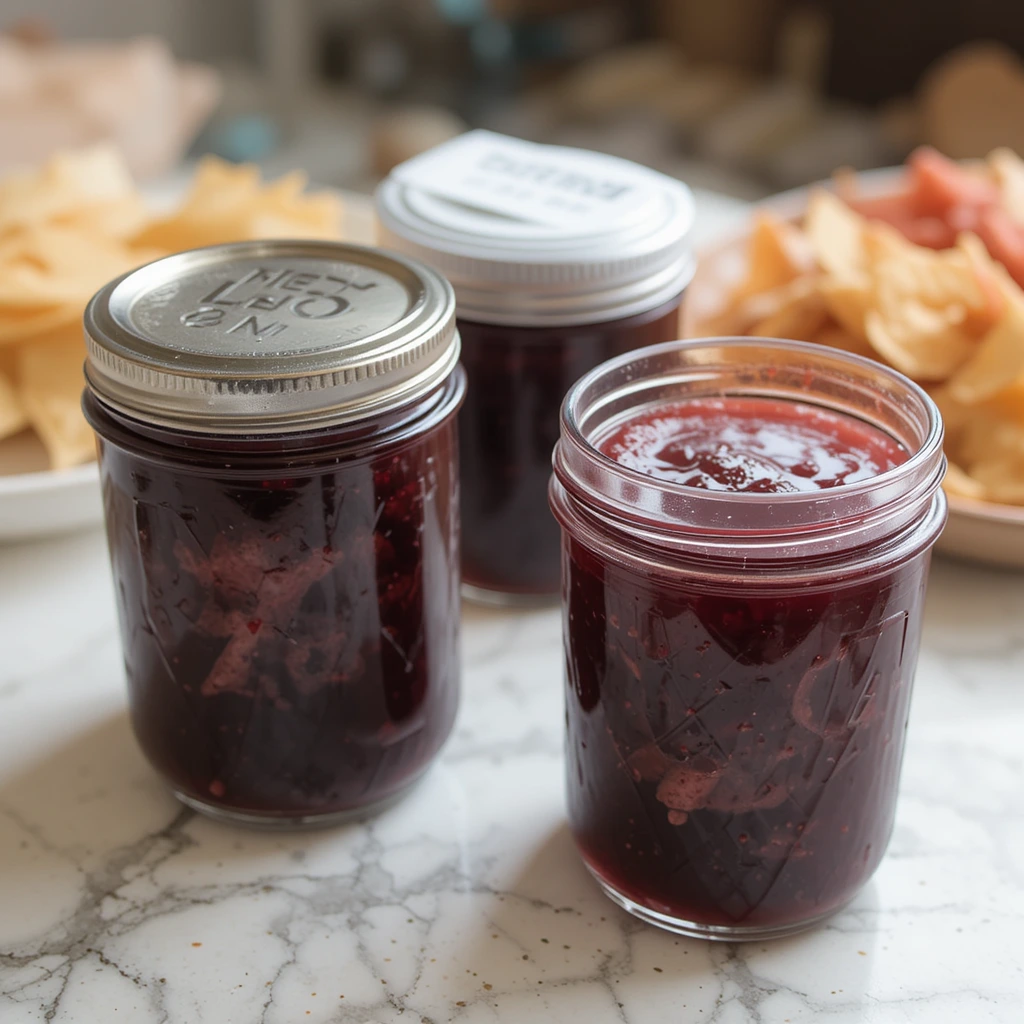Jam is a beloved treat that has graced our tables for centuries. Whether spread on toast, used as a filling for pastries, or simply enjoyed by the spoonful, the debate over whether jam is better with or without pectin is a common question among both novice and experienced jam makers. Pectin, a natural gelling agent found in many fruits, is often used in jam-making to achieve the perfect consistency and texture. However, there are those who argue that jam made without added pectin can be just as good — if not better. In this article, we’ll explore the pros and cons of using pectin in jam, compare it with making jam without it, and help you determine which method is best for your kitchen.
What is Pectin?
Before diving into the specifics of whether jam is better with or without pectin, let’s first define what pectin is. Pectin is a natural carbohydrate (polysaccharide) found in the cell walls of fruits. It plays a key role in helping fruits to form a gel-like consistency when cooked, making it a critical ingredient in jams, jellies, and preserves. Pectin is most commonly found in high concentrations in apples, citrus fruits (especially lemons), and berries.
In jam-making, pectin helps thicken the mixture and create that perfect, spreadable consistency. Without it, jams may be too runny or watery, but with the right amount, it can yield a beautifully smooth and firm texture.

The Role of Pectin in Jam-Making
Pectin’s primary function in jam-making is to help the fruit and sugar mixture thicken and gel when heated. In addition to helping the jam set, it also helps retain the fruit’s natural flavors and colors. Typically, pectin is added in the form of powdered or liquid pectin, which is available in stores, or it can be naturally sourced from certain fruits.
The process of jam-making involves combining fruit, sugar, and pectin (if used) and then heating the mixture to a high temperature. This causes the pectin to activate and form a gel-like texture. The longer the jam is boiled, the more concentrated the fruit mixture becomes, which helps it set.
Is Jam Better With or Without Pectin?
Now that we understand what pectin is and its role in the jam-making process, let’s look at the key differences between using pectin and not using it. We’ll cover the advantages and disadvantages of both methods, so you can decide which one works best for you.
Making Jam with Pectin
Advantages of Using Pectin
- Consistency and Reliability
One of the most significant advantages of using pectin in jam-making is that it guarantees a consistent and reliable outcome. Pectin acts as a natural gelling agent that helps the jam thicken quickly and set properly. This is especially helpful if you’re new to jam-making or if you want a foolproof method to achieve the perfect texture. - Faster Cooking Time
Adding pectin to your jam recipe can significantly reduce the cooking time. Pectin helps the jam reach the desired consistency more quickly, saving you time in the kitchen. This is especially helpful when you’re making large batches or if you want to preserve the fresh flavors of the fruit. - Better Set with Low-Pectin Fruits
Some fruits, like strawberries and blueberries, are naturally low in pectin and may not set well on their own. Adding commercial pectin to the mix helps compensate for this lack of pectin, ensuring your jam sets perfectly.
Disadvantages of Using Pectin
- Added Ingredients
Commercial pectin often contains added ingredients such as sugar, citric acid, and preservatives. If you’re trying to avoid these additives, making jam with pectin may not be the best choice. You can find natural pectin options, but they may still include additional ingredients. - Taste Variations
Some people find that pectin-based jams have a slightly different taste compared to traditional, slow-cooked jams. The texture of pectin-based jams can also sometimes feel a little too firm or gelatinous for some tastes. - Artificial Texture
While pectin does help to create a nice gelled texture, it may feel somewhat artificial or overly smooth for those who prefer a more rustic, homemade feel in their jams.
Making Jam Without Pectin
Advantages :
- Natural Flavor
Making jam without added pectin allows the natural flavors of the fruit to shine through without interference from artificial gelling agents. This method lets the fruit speak for itself, resulting in a more authentic and natural tasting jam. - No Additives or Preservatives
By skipping the pectin, you avoid any potential preservatives or artificial ingredients that might be present in commercial pectin products. If you’re looking for a completely natural, preservative-free jam, this method is ideal. - Rich, Chunky Texture
Jam made without pectin tends to have a more rustic, chunky texture with fruit pieces still clearly visible. This is perfect for those who enjoy a more traditional, homemade feel to their jam. You can adjust the consistency to your liking by cooking it down for longer or leaving it a bit looser. - More Control Over Texture
Without pectin, you have complete control over the final texture. If you prefer your jam thicker or thinner, you can adjust it during the cooking process. The key is to cook the fruit mixture to the right consistency, which can take some trial and error.
Disadvantages :
- Longer Cooking Time
Without pectin, you’ll need to cook the jam for much longer to reach the desired consistency. This can take anywhere from 30 minutes to an hour or more, depending on the fruit and the amount of water content. The extended cooking time also reduces the fresh fruit flavor, so it’s essential to balance cooking time with flavor preservation. - Unpredictable Results
Without the added assurance of pectin, jam-making can be a bit more unpredictable. If the cooking time is too short, your jam may not set. If you cook it for too long, it can become too thick or caramelized. It takes practice and patience to get the right balance. - Not Ideal for Low-Pectin Fruits
Low-pectin fruits, such as strawberries, peaches, or blueberries, may not gel well on their own. While it’s possible to make jam without pectin using natural methods, it can be much harder to get a good set from these fruits without the aid of added pectin. - Risk of Spoilage
Jam made without pectin may be more prone to spoilage if not stored or processed correctly. The longer cooking time required to make a proper set can reduce the shelf life of the jam if it isn’t sealed and preserved properly.
Which is Better? Jam with or without Pectin?
The answer to whether jam is better with or without pectin ultimately comes down to personal preference and the specific circumstances of your jam-making. Here’s a summary of the key points to help you decide:
- If you’re new to jam-making or want a reliable, consistent texture with a quicker cooking time, using pectin is a good choice. It will save you time and guarantee a great set.
- If you prefer a more natural, authentic flavor, and you’re willing to put in the time to cook your jam slowly, making jam without pectin is the way to go. It allows you to enjoy the true taste of the fruit without any added ingredients.
- For low-pectin fruits, using commercial pectin is often necessary to get a good set. If you use fruits with naturally high pectin content, like apples, citrus, or quinces, you may be able to skip the pectin and still get a great result.

Tips for Making Jam With or Without Pectin
- Use Fresh, Ripe Fruit: For the best flavor and texture, always use fresh, fully ripe fruit. Overripe fruit may not set as well, whether you use pectin or not.
- Test the Set: Whether using pectin or not, always test the set of your jam before you finish cooking it. You can do this by placing a spoonful of jam on a chilled plate and seeing if it wrinkles when pushed with your finger.
- Consider Using a Combination: Some people use a little bit of pectin in combination with slow cooking to achieve the perfect balance between texture and flavor. This method can help you get the best of both worlds.
- Preserve Properly: Whether you use pectin or not, always store your jam in sterilized jars and process them properly to ensure a long shelf life.
FAQ
1. What is pectin, and why is it used in jam-making?
Pectin is a natural carbohydrate found in the cell walls of fruits, particularly in apples, citrus fruits, and berries. It is used in jam-making to help the fruit and sugar mixture set and achieve a gel-like consistency. When heated with sugar, pectin activates and thickens the jam, making it easier to spread and giving it the desired texture.
2. Can I make jam without using pectin?
Yes, you can make jam without pectin. Many traditional jam recipes rely on the natural pectin found in certain fruits. By cooking the fruit and sugar mixture for a longer period, the water content evaporates, and the jam thickens naturally. However, this method may take longer to cook and requires more attention to ensure the proper texture.
3. Which fruits contain the most natural pectin?
Fruits like apples, citrus (especially lemons), quinces, and gooseberries are naturally high in pectin. These fruits make it easier to create jam without the need for additional pectin. Other fruits like strawberries and blueberries are low in pectin and may require added pectin to help the jam set properly.
4. How can I tell if my jam has set properly?
One common way to test the set of your jam is the “wrinkle test.” Place a small plate in the freezer before you start making the jam. Once your jam has been cooking for a while, spoon a small amount onto the chilled plate. Let it cool for a few seconds, then run your finger through the jam. If it wrinkles and holds its shape, it has set properly. If it’s still runny, continue cooking and test again every few minutes.
5. Can I use store-bought pectin for all fruits?
Store-bought pectin works well with most fruits, but it is particularly useful for low-pectin fruits such as strawberries, blueberries, and peaches. Some pectin types are designed specifically for certain fruits, so make sure to read the label to ensure compatibility with your recipe. There are also “no-sugar” or “low-sugar” pectins available for those looking to make lower-sugar jams.
6. How long does jam made with pectin last?
Jam made with pectin, when processed and sealed properly, can last for up to a year in a cool, dark place. Once opened, it should be refrigerated and consumed within 3 to 4 weeks. Homemade jam without pectin generally has a slightly shorter shelf life due to the absence of preservatives, so it should be consumed within a few months if kept at room temperature.
7. Can I use less sugar when making jam with pectin?
Yes, it’s possible to use less sugar when making jam with pectin, but you should keep in mind that sugar plays several roles in jam-making, including preserving the jam and helping it set. Using less sugar may result in a runnier jam or a shorter shelf life. Many commercial pectin products also offer special recipes designed for reduced-sugar jams, so it’s a good idea to follow those guidelines for the best results.
8. How do I store homemade jam?
Once your jam is made, it’s important to store it properly to ensure its longevity. First, make sure to sterilize your jars and lids before filling them with hot jam. After sealing the jars, process them in a hot water bath for 5-10 minutes to create a vacuum seal. Store the jars in a cool, dark place, and refrigerate them once opened.
Conclusion
In the end, there’s no definitive answer to whether jam is better with or without pectin. It depends on your personal preference for flavor, texture, and cooking time. If you’re looking for a quick, reliable method with consistent results, using pectin might be your best bet. However, if you enjoy the process of making jam from scratch and want a more natural, fruit-forward taste, skipping the pectin can lead to a satisfying and delicious jam.
Whichever method you choose, homemade jam is always a treat, and the joy of spreading a jar of your own creation on toast or giving it as a gift is worth the effort. Enjoy experimenting with different fruits and techniques to find the perfect jam for your tastes!

